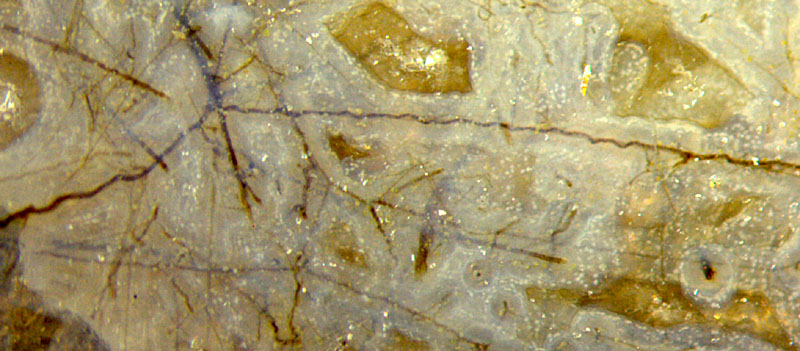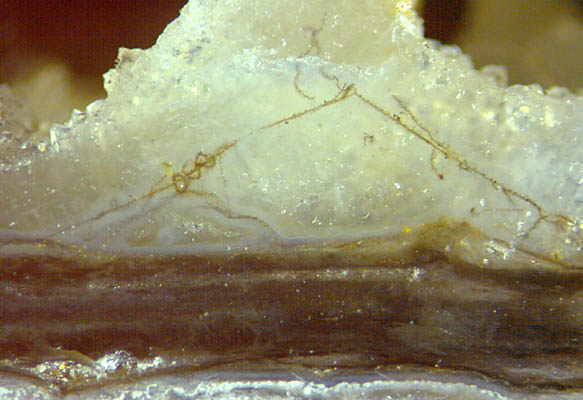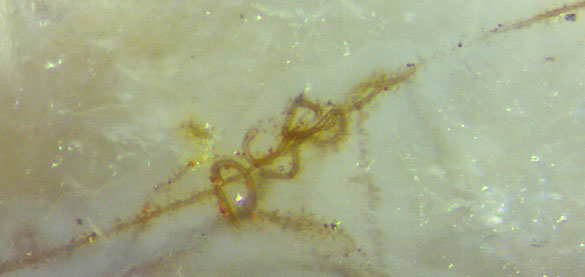Fossil mycoparasite like
extant Trichoderma (2)

The peculiar ability of the filamentous fungus Trichoderma
to live as a symbiont in plants and to destroy
dangerous fungi, has made its several species and strains well-known
means of crop protection. Continuing research, involving molecular
genetics, with the aim to further
improve its performance, has yielded, in addition to results of
agricultural value, the minor scientific result that the useful combination of traits must have evolved far back in time [1].
Apparently no fossil evidence of Trichoderma attacking
other hyphae has been found, hence it is interesting, less commercially
than scientifically, that wavy hyphae strongly
resembling extant Trichoderma
[2] are seen in the Lower Devonian Rhynie chert (Fig.1
and Part
1).
Fig.1: Fungus hyphae:
irregularly wavy,
apparently grown along "normal" ones.
Width of the image 4.4mm, same
scale as in Part (1).

 Fig.3: Mycoparasite (?) curling
around straight hypha, detail of Fig.2.
Fig.3: Mycoparasite (?) curling
around straight hypha, detail of Fig.2.
Fig.2
(far left): Hyphae grown in a water-filled cavity, preserved in silica gel
turned into chalzedony, topped with quartz; thick microbial stratum
below.
The big loops, possibly in contact with a straight
hypha, suggest a similar parasitic relation as with the narrow turns
and waves in Fig.1. Hence it might be the same fungus or a related one.
Straight and wavy parts combined seem to indicate a variable way of
life. (See Rhynie Chert News 78
and Part
1, Fig.6.) Additional observations on peculiar fossil hyphae may contribute to
better understanding the mycoparasitism of the
useful fungus Trichoderma.
H.-J.
Weiss 2017
[1] C.P. Kubicek:
Comparative genome sequence analysis underscores mycoparasitism as the
ancestral life style of Trichoderma.
Genome Biol. 2011; 12(4): R40.
[2] Google: jgi mycocosm trichoderma virens.
 |
 |
111 |




 Fig.3: Mycoparasite (?) curling
around straight hypha, detail of Fig.2.
Fig.3: Mycoparasite (?) curling
around straight hypha, detail of Fig.2.
